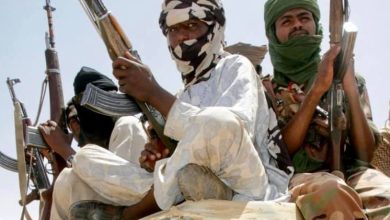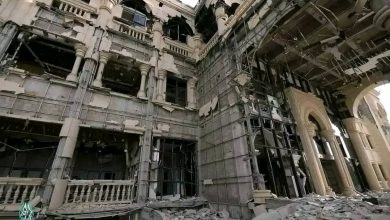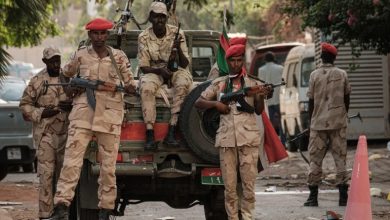“Khor Jahannam “… Tragedy of Girls Transported from Cities to Darfur to be Sold as “Slaves”

Report – Amir Abdul Majid
I do not know when I heard the name of this Khor Jahannam (Hell Stream) for the first time, but what is certain is that I heard the name a lot after the fourth month of the war… perhaps before it, in the middle, or after it. All possibilities are possible, but this “Khor Jahannam” has become a bogeyman for many families who heard of its existence in Darfur. Families quickly left their homes when they learned that their area of residence was threatened by the entry of the Rapid Support militia (RSF). They cannot ignore the fact that families in Khartoum, Gezira, or elsewhere left their homes because of fear for their daughters from being kidnapped and raped.
Rape of decent women:
This is a well-known characteristic of the RSF, in addition to killing and looting. These forces have not yet been proven to have entered an area and did not kill citizens there or plunder the homes of citizens or rape women here and kidnap women there. All the areas that the RSF entered witnessed rapes and kidnappings of girls. It is true that the kidnapping cases in the beginning were not as widespread as they have been. To him currently, but we were following on the media talks about kidnappings of girls and publications about missing women here and there.
Stigma
Meanwhile, rape operations were taking place in Khartoum in large parts of the areas where the RSF were deployed, and you will not find records of them because Sudanese families often consider rape crimes a disgrace to the girl, so they refrain from speaking publicly about them, and focus on their pain and surgeries, and look for ways to treat their daughter.
Abduction:
Rape cases have not stopped to this day, as the tragedy of the little girl who was raped in the Tuti area in Khartoum came to light last week. The RSF also appeared early in plundering banks, homes, and institutions. They began raping girls in Khartoum and even built homes for them in the city of Bahri, for example, as Survivor Maria Hassan, who was kidnapped from Al-Droshab, north of Bahri, and went to a house where she found (19) girls who were kidnapped by the RSF militia and forced to stay there to prepare food for the soldiers, wash clothes, etc., recounted that the soldiers there were using the girls as maids and nurses for the wounded, and that they were suffering from the availability of drinking water and are deprived of food.
Forced disappearance:
This is one of many points set up by the militia for the forced disappearance of girls. There are other points in Bahri itself, Khartoum and Omdurman. I believe that the idea of transportation and establishing markets was nourished from here. The United Nations High Commissioner for Human Rights documented early in its report on Sudan the presence of 50 A case of sexual violence, including individual and gang rape, took place from April 15 to November 2, 2023. The Commission said in its report that the situation in areas under RSF control is similar to slavery. She later indicated in a statement that sources confirmed to her that cars carrying women and girls left Khartoum for Darfur, which was indicated by identical sources, including relief worker Muheeb Al-Din Faris and journalist Al-Hadi Abdullah, who indicated that the kidnapping of girls had spread in Darfur, and confirmed that the RSF fighters who fled from the battles in Khartoum transported dozens of kidnapped girls to Darfur, and revealed the existence of markets for selling girls in El Daein and northwest Darfur.
Huge sums:
What raises the question here is whether the “Hell Market” exists in this region only… The answer is no, because other women have been documented by local sources selling them in other regions, such as the incident of the girl who was freed by her classmate in Kabkabiya and paid an amount of (600) thousand pounds, or the incident of two girls being sold for one billion and seven hundred thousand pounds. The buyer went to the Ardamta region near El Geneina.
Market location:
To decipher the location of the market, the type of merchants, and where the buyer takes the girls, I contacted a number of people familiar with the matter, but some refused to talk, and others were not contacted due to the breakdown of communications in Darfur, except for a person named “Hamad.”
(Hamad), which is not his real name because he requested not to be disclosed because there are relatives of his in Darfur that he fears will be killed. He was present at the moment of contact in eastern Sudan for treatment after he was hit by shrapnel in the back… I began my conversation with him by asking about the name of “Khor Jahannam,” and he said that it is for a village. In North Darfur, it may have been a gathering point or where a market was held to sell kidnapped women from Khartoum, Gezira, and some Darfur cities, but in general, I do not think that the Khor Jahannam market in Darfur is limited to a specific area. This market has become like the Dagalo market, which is spread in several areas in Khartoum. The Dagalo market is known for selling… Stolen goods and the “Hell Market” is known for selling kidnapped girls. As I have seen, the girls in the market come, as was said in the old books, as captives bound in chains. They are called upon and sold at prices ranging from five hundred thousand pounds to one and one and a half billion pounds, depending on the color of the girl. A girl with dark skin is sold at a lower price than the price of a girl of white skin, and the price of the girl kidnapped from Khartoum is higher than the girls kidnapped from other states.
Selling to foreigners:
Hammad added in his interview with (Sudan Events) “Some of the girls were sold to people from outside Sudan who came to the “Hell Market” from Chad, Niger, Mali and other places. These people paid in free currency and bought girls who were transported to Niamey, N’Djamena and other places.” He continued: “These markets are mobile and are more like markets that carry…the names of the days are like Tuesday, Wednesday, and others. The market is in this place today and tomorrow in another place, and most of them are in nomad villages, villages, and on the outskirts of the large cities in Darfur.
In response to a question about whether these markets are still working, he said, “I came out for medical treatment with my injury a while ago, and I do not know what is happening there now, but according to my experience in dealing with these people, yes, the markets are working, and whenever the RSF enters a new area, it sends other girls to sell them there or to blackmail families and receive money in exchange for the return of their kidnapped daughter. He continued, “The matter has turned into a trade for RSF. The girl brings them money by selling it or by returning her to her family.” He added, “In any case, the money will come to them, so why should they stop?”



